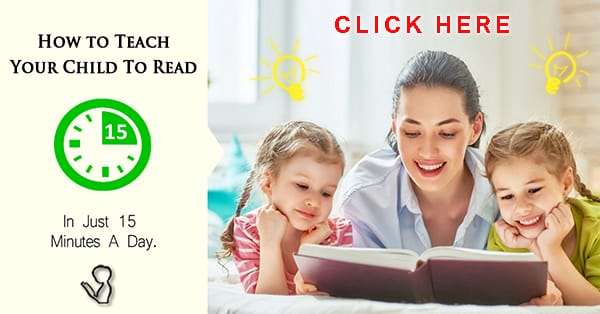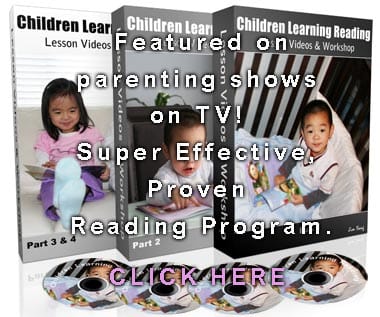Effective Strategies for Teaching Beginning Reading in Early Childhood Education
Teaching beginning reading is an essential part of early childhood education. It is one of the most important skills that a child needs to develop in order to become successful in the future. Reading is a key component of language development and is essential for academic success.
As such, it is essential that teachers have a comprehensive understanding of the strategies and techniques needed to effectively teach beginning reading. This includes understanding the components of literacy, the importance of phonemic awareness, developing literacy skills, and teaching reading strategies.
With the right knowledge and strategies, teachers can help their students become successful readers.

How to Use Phonemic and Phonological Awareness to Teach Reading to Beginning Readers
![]()
If you’re a teacher looking to teach your beginning readers how to read, phonemic and phonological awareness can be a great place to start. These two concepts are closely related and can help your students learn to read more efficiently. Let’s start by going over what each of these terms mean.
Phonemic awareness is the ability to recognize and manipulate the individual sounds in spoken words. This includes being able to identify specific phonemes and blend them together to form words. For example, students with phonemic awareness will be able to recognize that the /b/ sound, /a/ sound and /t/ sound together make the word “bat.”
Phonological awareness, on the other hand, is the ability to recognize and manipulate larger units of sound. This includes recognizing syllables, rhyming words and other sound patterns.
Once your students understand these concepts, you can start teaching them how to read. There are a few key activities you can do to help your students learn to read.
One way to help your students develop phonemic awareness is to have them work with letter sounds. Get them to start by identifying the first sound in a word, then have them blend the sounds together to figure out the word. You can also have them practice breaking up words into their individual sounds.
To help your students build phonological awareness, you can have them practice rhyming words and recognizing syllables. Have them clap each syllable in a word or match words that rhyme.
You can also have your students practice identifying words that begin with the same sound. Have them look for pictures in a magazine that start with the same sound and cut them out to create a collage.
As your students become more comfortable with phonemic and phonological awareness, you can introduce them to more complex reading activities. This could include having them read stories and identify words that follow specific sound patterns.
By introducing your students to phonemic and phonological awareness, you’ll be giving them the building blocks they need to become successful readers. With a bit of patience and practice, your students will soon be reading like pros!
Building Fluency and Reading Comprehension Skills for Beginning Readers
![]()
Are you a parent of a beginning reader? If so, you know that the road to becoming a proficient reader can be a long and winding one. But don’t worry – there are plenty of strategies you can use to help your child become a confident and competent reader.
One of the most important areas for beginning readers to develop is fluency and reading comprehension. Fluency is the ability to read words accurately and quickly, while reading comprehension is the ability to understand what is read. Both are essential skills for becoming a successful reader.
Here are some tips for helping your child build fluency and reading comprehension skills:
- 1. Read aloud to your child. This not only helps your child become familiar with different types of texts, but it can also help build fluency and reading comprehension skills. When you read aloud to your child, encourage them to follow along with the text. This will help them become familiar with the words and concepts in the text, as well as help them learn to recognize words quickly.
- 2. Provide opportunities for practice. Reading is a skill that requires lots of practice. Provide your child with plenty of opportunities to read at home. Make sure to have books around the house that your child can grab and read at any time. Encourage them to read for pleasure, as well as for learning.
- 3. Break down complex words. If your child is having difficulty with a word, break it down into smaller pieces. For example, if your child is having difficulty with the word “catastrophe”, break it down into the root words “cat” and “astrophe”. This can help your child learn to recognize and pronounce words more quickly.
- 4. Use flashcards. Flashcards are a great way to help your child learn words and their meanings. Use a variety of words, such as sight words, action words, and adjectives.
- 5. Play word games. Games such as Scrabble, Boggle, and Bananagrams are great for helping your child learn new words and practice their spelling.
- 6. Discuss what your child reads. Ask your child questions about the books they’re reading. This will help them practice their comprehension skills.
These tips can help your child become a better reader and gain more confidence in their reading ability. With a little practice and patience, your child can become a fluent and literate reader in no time!
Utilizing the Alphabetic Principle to Teach Beginning Readers
![]()
Teaching reading is an incredibly rewarding experience and can be a lot of fun. One important concept that you’ll want to focus on when teaching beginning readers is the alphabetic principle.
The alphabetic principle is the idea that letters represent sounds, and that these sounds can be combined to make words. It’s a concept that’s fundamental to learning how to read. Introducing and reinforcing the alphabetic principle is an important part of teaching reading and can be done in a variety of ways.
The first step in teaching the alphabetic principle is to introduce each letter of the alphabet and its corresponding sound. You can do this by using flashcards or by playing fun phonics games. You can also use songs that review the alphabet and its sounds. Once your students are familiar with the letters and their sounds, you can move on to teaching them how to blend sounds together to form words.
One of the most effective methods for teaching blending is to use nonsense words. Choose a set of nonsense words that contain only the sounds your students are familiar with and have them blend the sounds together to form the word. This is a great way to practice blending without having to worry about the meaning of the word.
You can also use books to help teach the alphabetic principle. Choose books that focus on phonemic awareness and that contain a lot of words that contain the sounds your students have learned. As they read the book, encourage them to sound out the words and blend the sounds together.
Finally, you can also use activities like writing and dictation to reinforce the alphabetic principle. Have your students write a word and then spell it out loud. This is a great way to practice blending and also helps them to develop writing skills.
Teaching the alphabetic principle is an important part of teaching reading. With a little bit of patience and practice, your students will be blending the sounds together in no time!
Teaching Print Awareness to Beginning Readers
![]()
Print awareness is an important skill to have as a reader, and it’s never too early to start learning. Print awareness is the understanding that written language has meaning and that printed words are made up of letters that form words. It’s also the understanding that we can use the print to share stories, messages, and ideas.
Let’s start with the basics of print awareness. One of the first things to understand is that print has meaning. Show your beginning reader a book and talk about the title, the author, the illustrations, and the words. Talk about the way the words tell a story. If you’re reading a storybook, don’t forget to point out the punctuation marks and how they help readers understand the story better.
Next, help your beginning reader start to recognize letters. Point out the letters in their name, and ask them to find other letters in their environment. You can also use letter magnets or blocks to practice forming letters. Once they start to recognize letters, start to talk about how the letters come together to form words.
Finally, talk about the importance of print. Help your beginning reader understand that books, newspapers, magazines, signs, and other printed materials all contain information. Talk about how print can be used to tell stories, express ideas, and communicate with other people. Point out the different types of print they might see in their environment.
Print awareness is an important part of learning how to read. With a little practice and guidance, your beginning reader can master this important skill.
Teaching Reading Strategies to Beginning Readers
![]()
Do you have a beginning reader in your life who is just starting to learn how to read? If so, you’ve come to the right place! Teaching reading strategies to beginning readers can be a challenging but rewarding experience.
Below, we’ve highlighted a few tips and tricks to help you get started on the path to building strong reading skills in your young learner.
Start small. When teaching beginning readers, it’s important to keep things simple. Choose books with short words and simple sentences, and use fun activities like word puzzles or matching games to keep them engaged.
Model good reading habits. Show your student how to sound out words and follow along with their finger as they read. Read with them and encourage them to read aloud to practice their skills.
Encourage asking questions. As your learner reads, have them ask questions to help them understand the text. Ask questions like “What do you think will happen next?” or “What do you think the author is trying to tell us?”
Take breaks. Learning to read can be exhausting, so make sure you’re taking some breaks throughout the reading session. Take a few minutes to talk about what was read, or take a walk to get some fresh air and come back feeling refreshed.
With these tips in mind, you’ll be well on your way to helping your beginning reader develop the reading skills they need to succeed.
Fostering a Love of Reading in Beginning Readers: Tips and Strategies for Parents and Teachers
![]()
As any parent or teacher of a beginning reader knows, instilling a love of reading in young children is one of the most rewarding experiences.
After all, reading is the gateway to a lifetime of knowledge and exploration. But how can you foster this love of reading in your beginning reader? Here are some tips and strategies to get your student excited about books.
- 1. Make it fun: Reading should never feel like a chore, so do your best to make it an enjoyable experience. Use a variety of fun activities to keep your students engaged and excited about reading, such as reading aloud with them, playing word games, and having them draw pictures of the stories they’ve read.
- 2. Let them pick: Letting your beginning reader choose their own books can be a great way to get them interested in reading. Give them a few options and let them pick which ones they want to read. This will make them feel empowered and more likely to engage with the material.
- 3. Read with them: Reading aloud with your student can be a great way to foster a love of reading. Not only will it help them to understand the material better, but it will also provide a chance for you to bond with them.
- 4. Reward them: Rewards can be a great way to motivate your student to read. Let them earn points or prizes for reading a certain number of pages or books. This will make them more likely to stick with it.
- 5. Encourage them: As with any skill, reading requires practice. Make sure to encourage your student when they’re struggling, and remind them that it will get easier with time.
These are just a few tips and strategies to help foster a love of reading in your beginning reader. By making reading fun and rewarding, you can help your student develop a lifelong appreciation for books.
Frequently Asked Questions
![]()
Q1. What strategies should be used to teach beginning reading?
A1. Strategies to teach beginning reading should include phonemic awareness activities, phonics instruction, sight word instruction, comprehension strategies, and explicit fluency instruction.
Q2. What is phonemic awareness and why is it important?
A2. Phonemic awareness is the ability to recognize and manipulate the individual sounds (phonemes) in spoken words. It is an important early reading skill as it helps students become aware of the sounds that make up words and understand how words are made up of smaller parts.
Q3. What is phonics instruction and how does it help students learn to read?
A3. Phonics instruction teaches students to recognize the relationship between letters and the sounds they make. Through this instruction, students learn how to sound out words and make connections between written and spoken language. This helps them to decode words and learn how to read.
Q4. What is sight word instruction?
A4. Sight word instruction is the practice of teaching students to recognize common words by sight, without having to sound them out. This helps to increase students’ reading fluency and comprehension, as they can quickly recognize and understand words that they encounter.
Q5. What are some comprehension strategies that can be used to help beginning readers?
A5. Comprehension strategies can include asking questions, summarizing, making predictions, visualizing, and using context clues. These strategies can help students understand what they are reading and make connections between what they are reading and their own experiences.
Q6. How can explicit fluency instruction help beginning readers?
A6. Explicit fluency instruction is a way to teach students to read more quickly and accurately. It can involve activities such as repeated readings, choral reading, partner reading, and timed readings. Through these activities, students learn how to read with expression and accuracy, which will help improve their overall reading fluency.
Conclusion: Effective Strategies for Teaching Beginning Reading
![]()
Teaching beginning reading is an essential part of a child’s education. It is important to ensure that children develop a strong foundation in reading that will serve them throughout their educational journey. With the right instruction and support, every child can learn to read and develop a love of reading that will last a lifetime.



